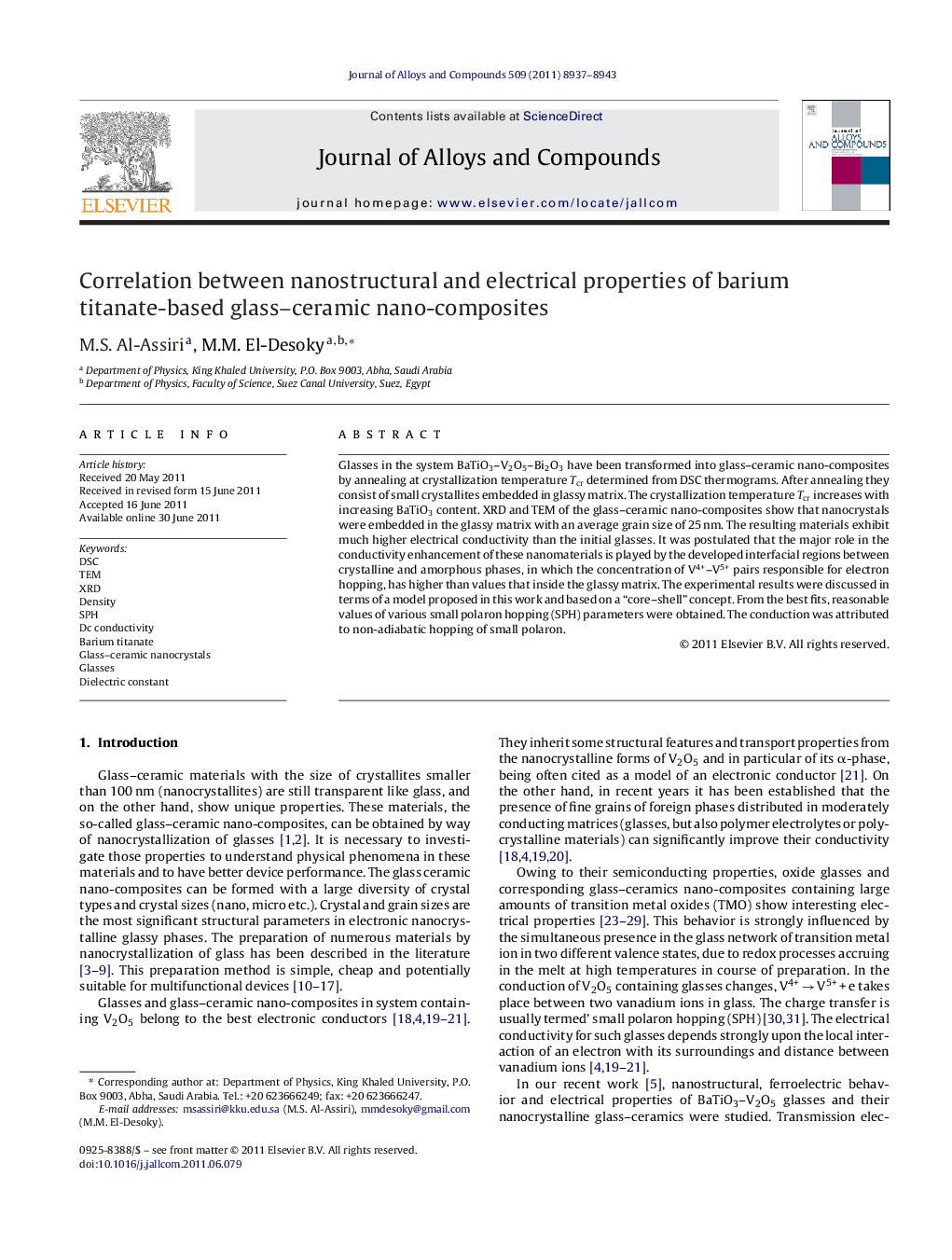| Article ID | Journal | Published Year | Pages | File Type |
|---|---|---|---|---|
| 1616966 | Journal of Alloys and Compounds | 2011 | 7 Pages |
Glasses in the system BaTiO3–V2O5–Bi2O3 have been transformed into glass–ceramic nano-composites by annealing at crystallization temperature Tcr determined from DSC thermograms. After annealing they consist of small crystallites embedded in glassy matrix. The crystallization temperature Tcr increases with increasing BaTiO3 content. XRD and TEM of the glass–ceramic nano-composites show that nanocrystals were embedded in the glassy matrix with an average grain size of 25 nm. The resulting materials exhibit much higher electrical conductivity than the initial glasses. It was postulated that the major role in the conductivity enhancement of these nanomaterials is played by the developed interfacial regions between crystalline and amorphous phases, in which the concentration of V4+–V5+ pairs responsible for electron hopping, has higher than values that inside the glassy matrix. The experimental results were discussed in terms of a model proposed in this work and based on a “core–shell” concept. From the best fits, reasonable values of various small polaron hopping (SPH) parameters were obtained. The conduction was attributed to non-adiabatic hopping of small polaron.
► Glasses have been transformed into nanomaterials by annealing at crystallization temperature. ► Glass-ceramic nano-composites are important because of their new physical. ► Grain sizes are the most significant structural parameter in electronic nanocrystalline phases. ► These phases are very high electrical conductivity. ► Hence, glass–ceramic nanocrystals are expected to be used, as gas sensors.
